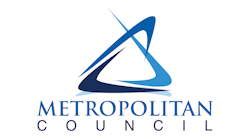Met Council Takes Another Step Forward on Expanding Opportunities for Minnesotans
The Metropolitan Council chose Siemens on Wednesday to manufacture new light rail vehicles for the Southwest LRT Project (SWLRT), which will expand access to more than 200,000 jobs located along the corridor.
The Council’s action authorizes Siemens to begin engineering the updates for the light rail vehicles. Siemens provided the existing Green Line vehicles five years ago – the new SWLRT vehicles will be improved versions of the Green Line cars, including improvements for users of wheelchairs and passenger with disabilities. They will be compatible with the existing Green Line vehicles. A full list of improvements can be found below.
Modifying the existing vehicle design, compared with developing a brand new design, will save money by reducing the amount of training needed for existing operators and maintenance staff, and by reducing storage space needed for parts, tools and future vehicle overhauls.
“While this step forward is a technical one, it embodies the planning and work that has gone into SWLRT,” said Met Council Chair Adam Duininck. “We continue to build upon our knowledge and investments, making SWLRT and future transit lines more efficient, while improving service for the tens of thousands of Minnesotans who will use it to access jobs and opportunity. As we seek to continue investing and building out our regional transit network, it is critical we find opportunities like these for future cost savings in operations and maintenance.”
Awarding contract now results in cost savings
The $118 million Siemens contract is for 27 light rail vehicles. The contract includes light rail vehicle production along with spare parts and tools to support operations and maintenance.
The Council will award the engineering portion of the contract now; the Federal Transit Administration (FTA) will match the cost incurred in summer 2017 after it issues the Full Funding Grant Agreement (FFGA), its commitment to pay half the total cost of the project. Called a Limited Notice to Proceed, this was done for the construction contracts, including the light rail vehicle contract, for the Green Line before the FTA awarded the full funding agreement in spring 2011.
Awarding and executing the contract now helps avoid cost escalation for materials. It also allows for the nearly two years needed to design, produce and deliver the vehicles in time to do several months of testing before revenue service begins in 2021.
The total contract price is 5 percent lower than the lowest cost estimate. This contract price is included in the $1.858 billion cost for the total project.
Council could utilize contract for additional vehicles for the Blue Line Extension LRT Project
The contract includes the option for the Council to purchase an additional 50 vehicles to meet anticipated needs for the Blue Line Extension LRT project, should funding sources be identified. The Blue Line Extension is about nine months behind SWLRT in terms of its level of design. If the Council did want to exercise those options, it would require a separate action by the Council.
Modifications will have many benefits
The Southwest cars will be improved versions of the Green Line cars, also designed and produced by Siemens. Improvements include:
- A redesign of the middle section of the vehicles to provide users of standard wheelchairs three more inches of aisle space, allowing them to traverse the full length of the low-floor area of each car. This will be accomplished by building the seats to face the aisles in the middle sections.
- The addition of automatic passenger counters.
- Ice cutters to remove sleet from the overhead wires that provide electrical current to power the trains
- Ergonomic improvements for operators
- Preferred seating to meet Americans with Disabilities guidelines
- Low-sounding bells
- Changes to parts and materials that will maintain high quality vehicle performance.
The new light rail vehicles can be paired with the original Green Line cars on both the Green Line and Green Line Extension. Each vehicle will hold more than 200 people fully loaded, with more than 600 people on three-car trains with just one operator. They will provide level boarding with room for four wheelchairs and two bicycles per vehicle. Like the original Green Line cars, the Southwest cars will weigh 100,000 pounds, 6,000 pounds lighter than the light rail vehicles made for the Blue Line, which opened in 2004. Lighter cars translate into greater efficiency because they use less electricity.
First light rail vehicle to be delivered in 2019
The first vehicle is expected to arrive in Minnesota in 2019 from the Siemens plant in California via freight train. After that, delivery is expected at a rate of two cars per month. They will be stored initially in Metro Transit’s operations and maintenance facilities in Minneapolis and tested overnight on existing Blue Line tracks in the tunnel under the MSP Airport. Each vehicle must undergo 500 miles of testing before entering revenue service in 2021.
Production of the light rail vehicles will begin in early spring 2018, after the Council awards the second stage of the contract for Siemens to build the cars.
The FTA is expected to approve SWLRT’s entry into the engineering phase in late November 2016. Heavy construction will begin in summer 2017.



